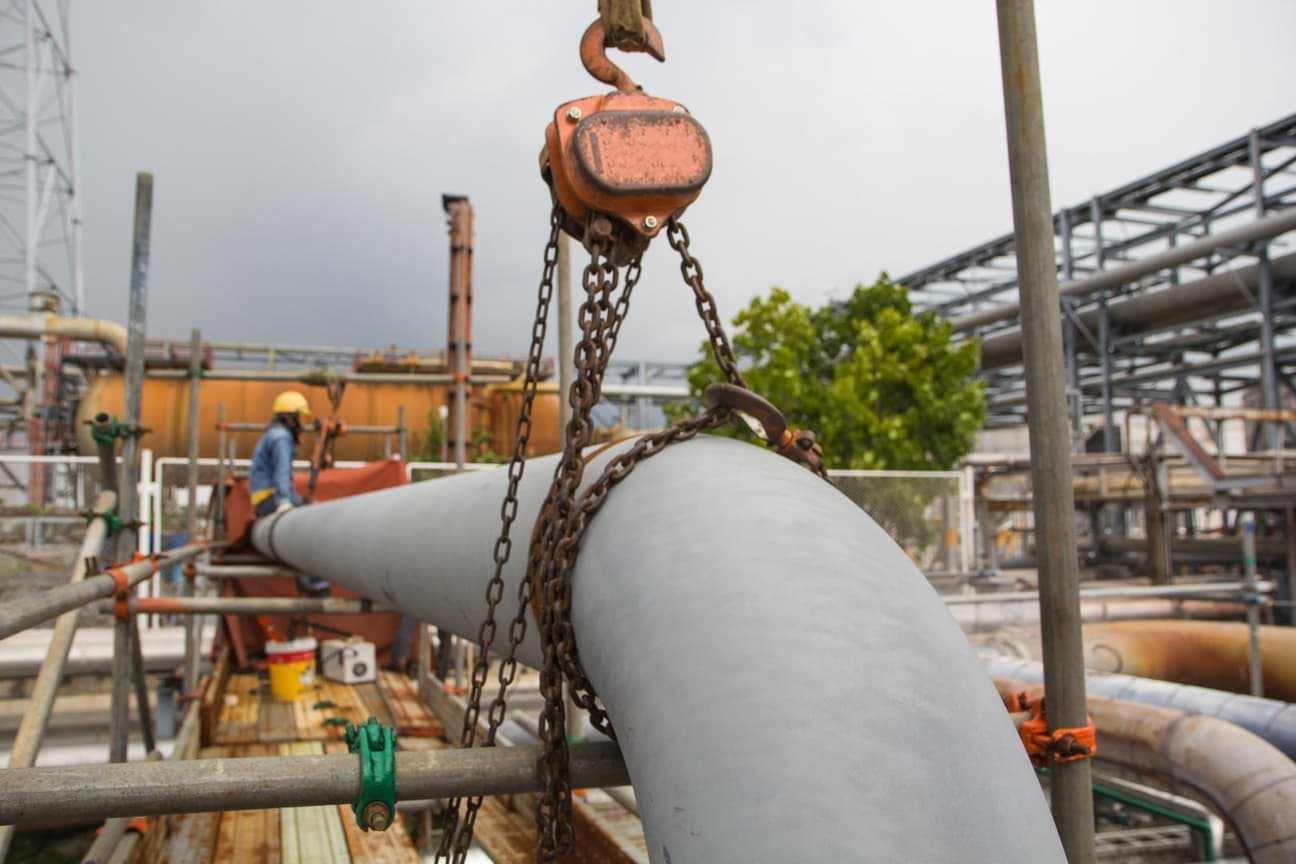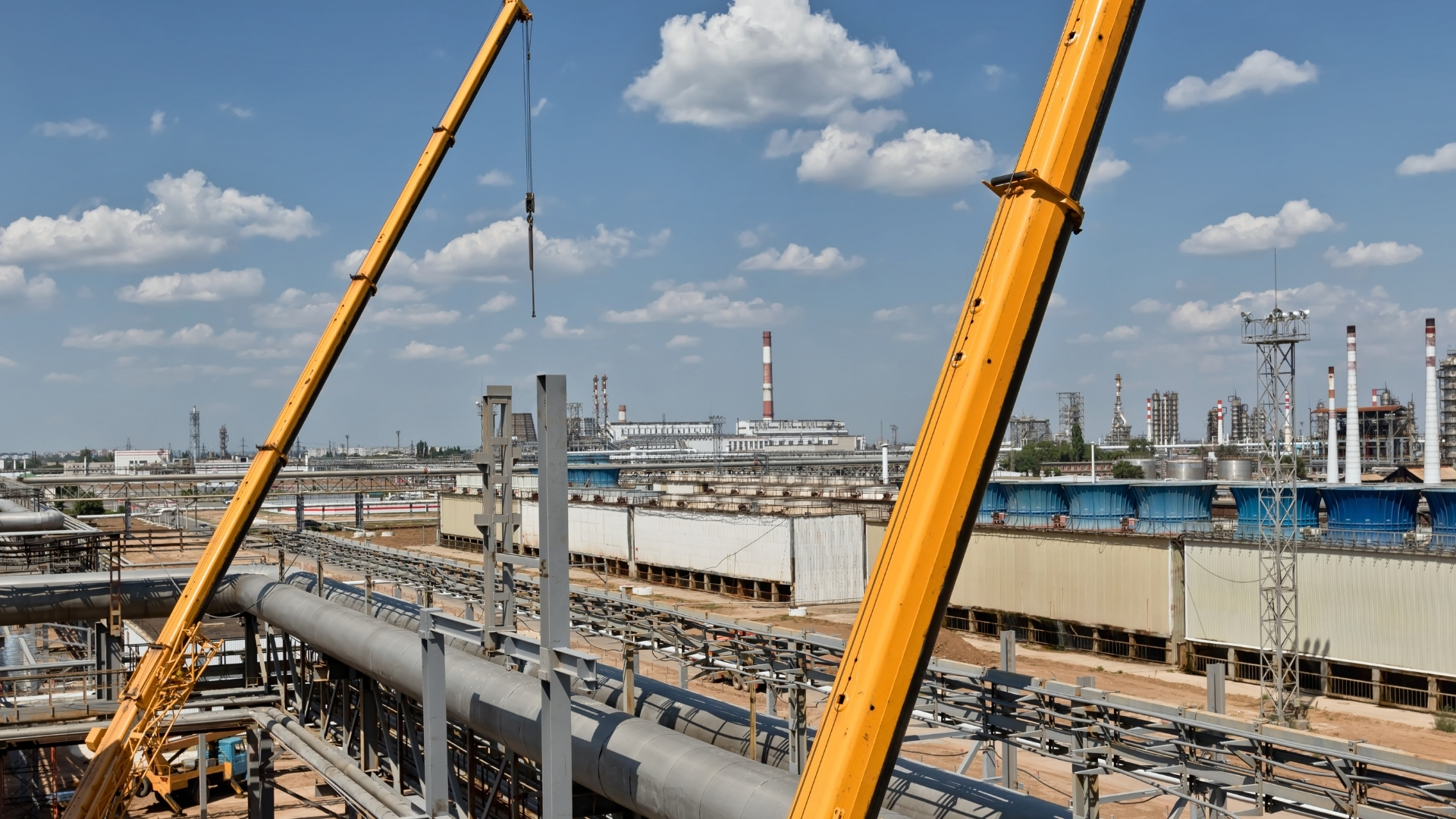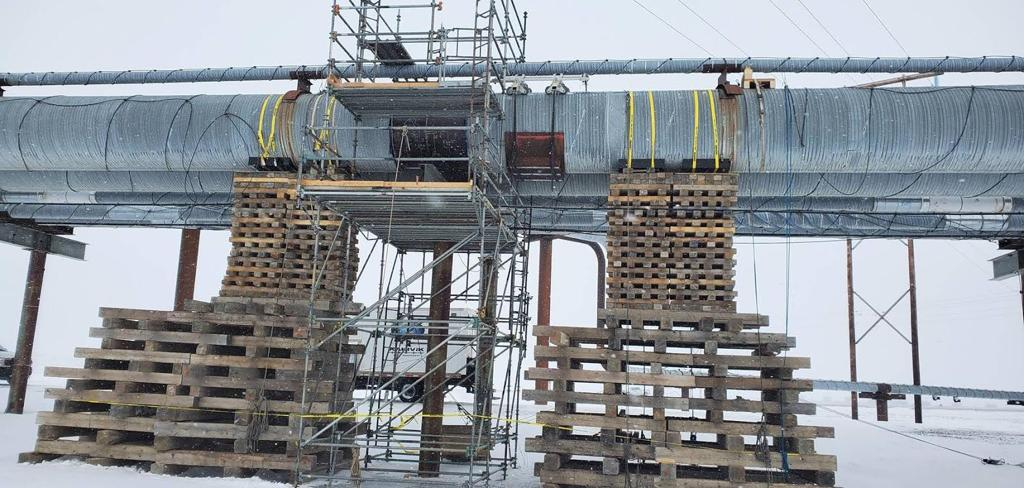Many on-stream inspection techniques exist that inspect for corrosion under pipe supports, including (among others) EMAT and guided wave testing. These methods are effective at evaluating corrosion severity, especially at pipe touchpoints, without the need for lifting. Before their arrival it was necessary to perform a direct visual inspection and/or UT measurement at the touchpoint.
While these methods allow operators to reduce the costs of performing inspections, line lifting is still required to perform necessary repairs at the touchpoint to mitigate the problem.
Many pipe lifting methods have been developed or simply implemented that are unsafe, costly or impractical, in many instances compelling operators to rely on them only in critical situations such as when there is a loss of containment.
This article discusses the conventional methods of line lifting, their benefits and shortcomings for various pipe sizes and layouts, and introduces recommended engineering and safety requirements that support a proactive approach to addressing corrosion under pipe supports.
Read: 21 Types of Pipe Corrosion and Failure
Inspecting for Corrosion Under Pipe Supports
Petrochemical facilities and refineries consist of many miles of above-ground piping that transports product between processing and storage units. These pipes are either supported at ground level or in multi-story pipe racks on varying types and sizes of supporting structures. A common problem these structures create is corrosion and erosion at the junction between the pipe and the support, which reduces the remaining wall thickness of the pipe and compromises the integrity of the entire system.
Inspection techniques such as EMAT and guided wave ultrasonics allow owners to safely inspect and provide qualitative information about the condition of these touchpoints while the lines are on-stream and without the need for lifting. This has many benefits, including reducing costs and the associated risks of performing inspections, which traditionally required the lines to be lifted. Operators also have a better understanding of the high-risk areas that require further inspection or repair.
However, line lifting is still required to provide free access at the pipe touchpoint for crews to mitigate the damage. There are conventional tools and methods used to lift lines, but almost all lack required safety features, procedures and engineering, which make them safe for use on on-stream equipment. Let's take a look at some of the tools most commonly used for line lifting.
Chainfalls
Chainfalls are the most commonly used tool for line lifting. They are relatively cheap and quick to deploy, but must be rigged from an above supporting structure, such as a pipe rack or temporarily installed strongback structure at an additional cost over and above the chainfall itself. Operators are also standing alongside the touchpoint being lifted, which places them at risk during the critical initial breakaway lift, especially when the lines are on-stream and there is the added risk of a loss of containment.
Chainfalls are considered suspended loads since they don’t have a positive mechanical locking mechanism keeping them elevated. For that reason, they are unsafe to work beneath and cannot be left elevated for extended periods of time. The most significant risk of all, however, is that most users don’t have a complete understanding of the resultant pipe stresses and line weights in the lifted position, which places users and pipes at risk of overloading rated equipment.

Line lifting using chainfall erected to a strongback
Source: Shutterstock/noomcpk
Cranes
Cranes are another popular method of line lifting. They are most commonly used to lift larger lines resting on ground-level supports or on the top levels of pipe racks. This method suffers from all of the shortcomings associated with chainfalls, but cranes are also costlier to implement, have a larger operating footprint and are not always practical for all types of pipe configurations and terminal layouts.

Cranes used to lift line
Source: iStock/Berkut_34
Traditional Pipe Jacks
Then there are traditional pipe jacks, which attach beneath the supporting beam with mechanical screws to elevate the lines. These tools can be effective, but they are also unsafe to use on live equipment and require clearance below the supporting beam to attach to the structure. As such, they cannot be used on ground-level supports.
Pillow Bags
Inflatable pillow bags can be used on ground-level supports through installation between the pipes and the ground. When inflated, they raise the line, but a failure can lead to a sudden and catastrophic drop of the pipe. They also require substantial cribbage to elevate the bag sufficiently and, depending on the distance between the bottom of the pipe and the ground, this can be costly and time-consuming. They also result in an uncontrolled lift, which can easily overlift (overstress) the pipes.

Substantial cribbage needed to lift an elevated 54” line
Source: Ovolifts
All of the above-mentioned methods of line lifting are limited to individual pipes, but many projects could benefit greatly by enabling lifting of multiple adjacent lines, for example when supports must be replaced or when a total refurbishment of the toughpoints are required.
The Ideal Pipe-Lifting Device
While different situations call for different solutions, an ideal pipe-lifting device should have the following characteristics:
- Remote lifting capabilities that allows personnel to stand off at a safe distance from the equipment during the critical lifting operation For example, jacks that are hydraulically activated can have the hoses configured to any length.
- Has a mechanical lockout mechanism resulting in a static structure and not a suspended load.
- Lifts from the existing supporting structure to greatly reduce the amount of additional rigging required.
- Lifts multiple lines in unison to improve productivity and reduce costs.
- Is engineered to ensure a safe (to personnel and pipeline assets) lifting operation. This engineering can include a pipe stress analysis to ensure pipe stresses remain within design-allowable limits during lifting operations, as well as a lift plan to consider actual site conditions and ensure that the lifting equipment operates within its operating limits.